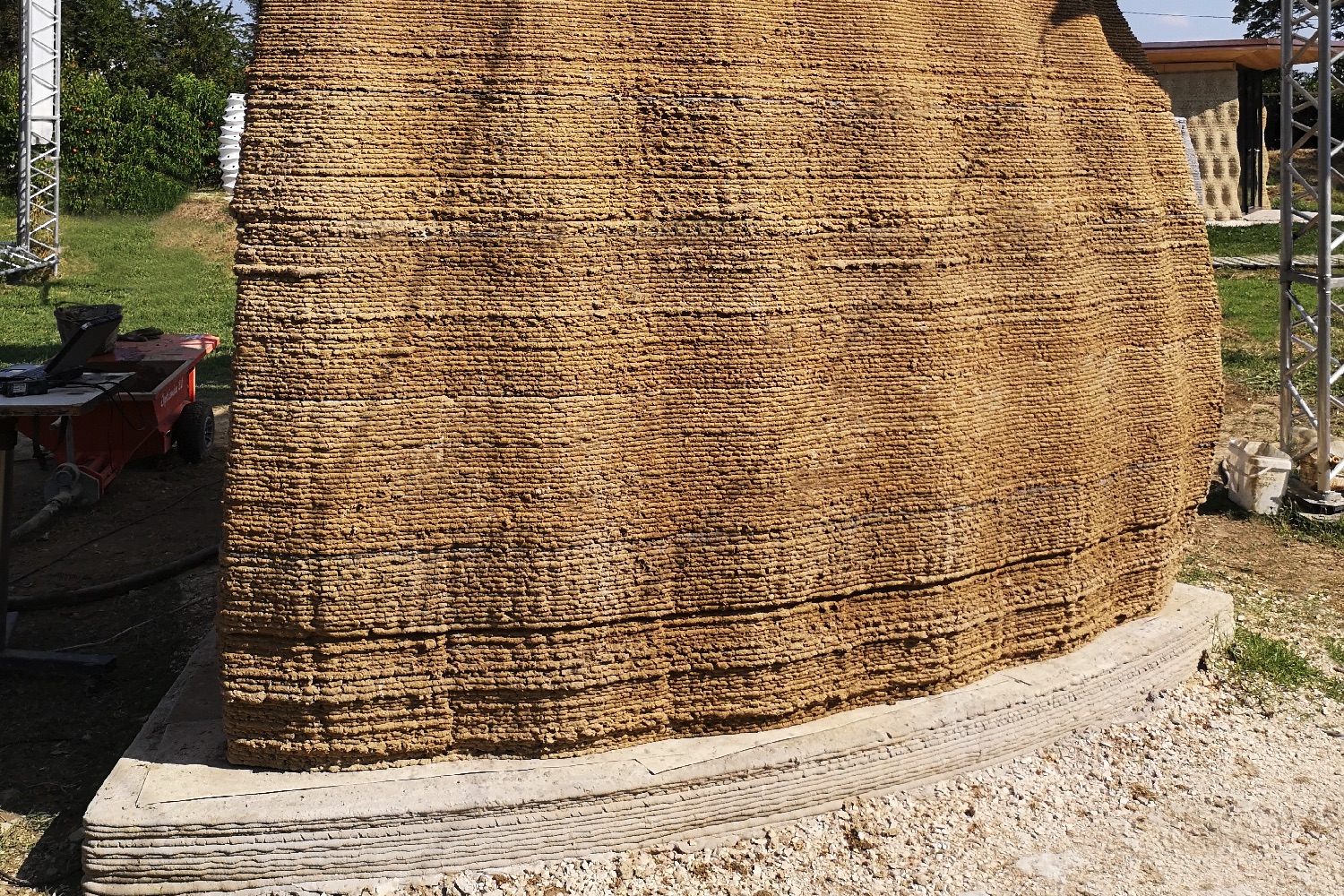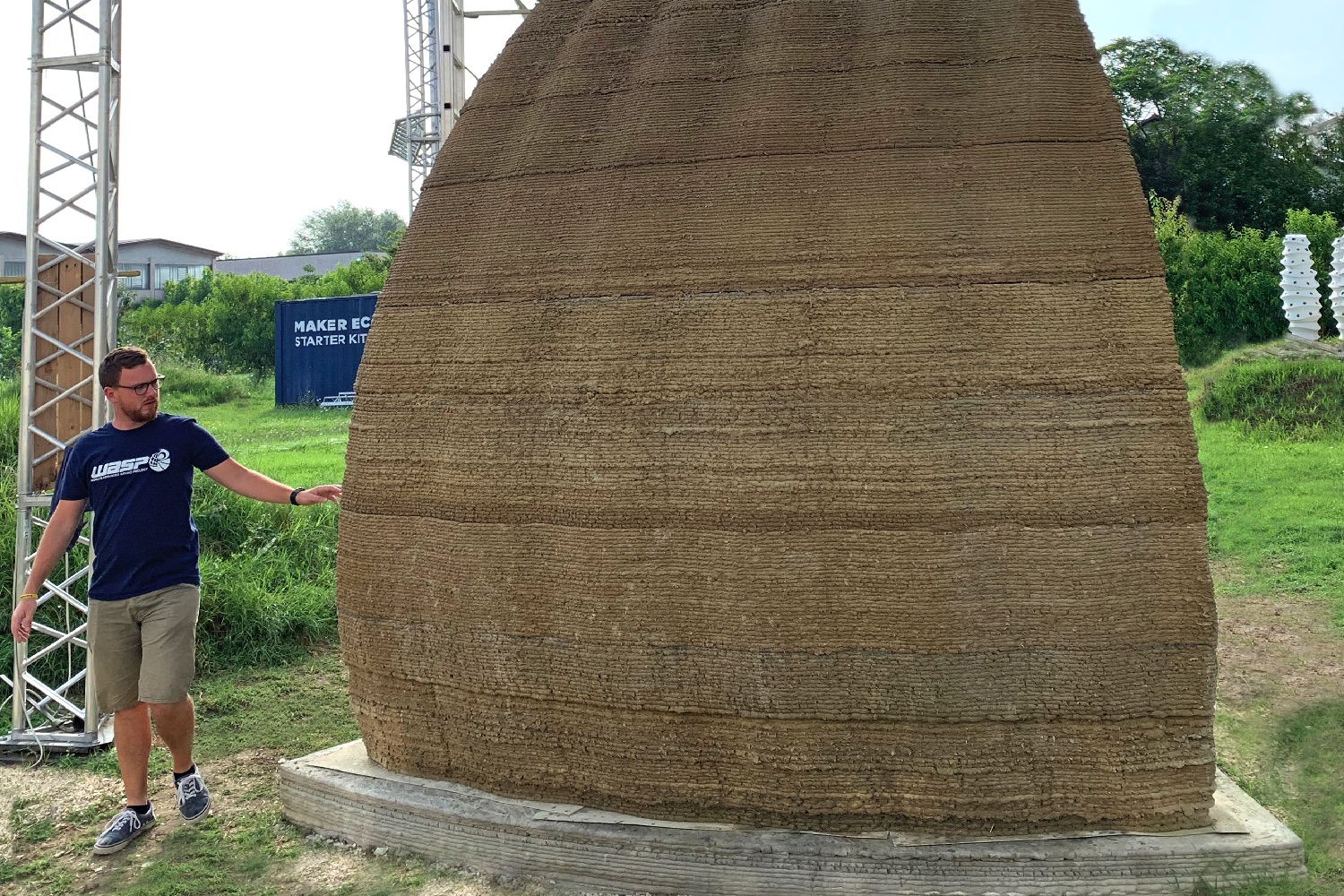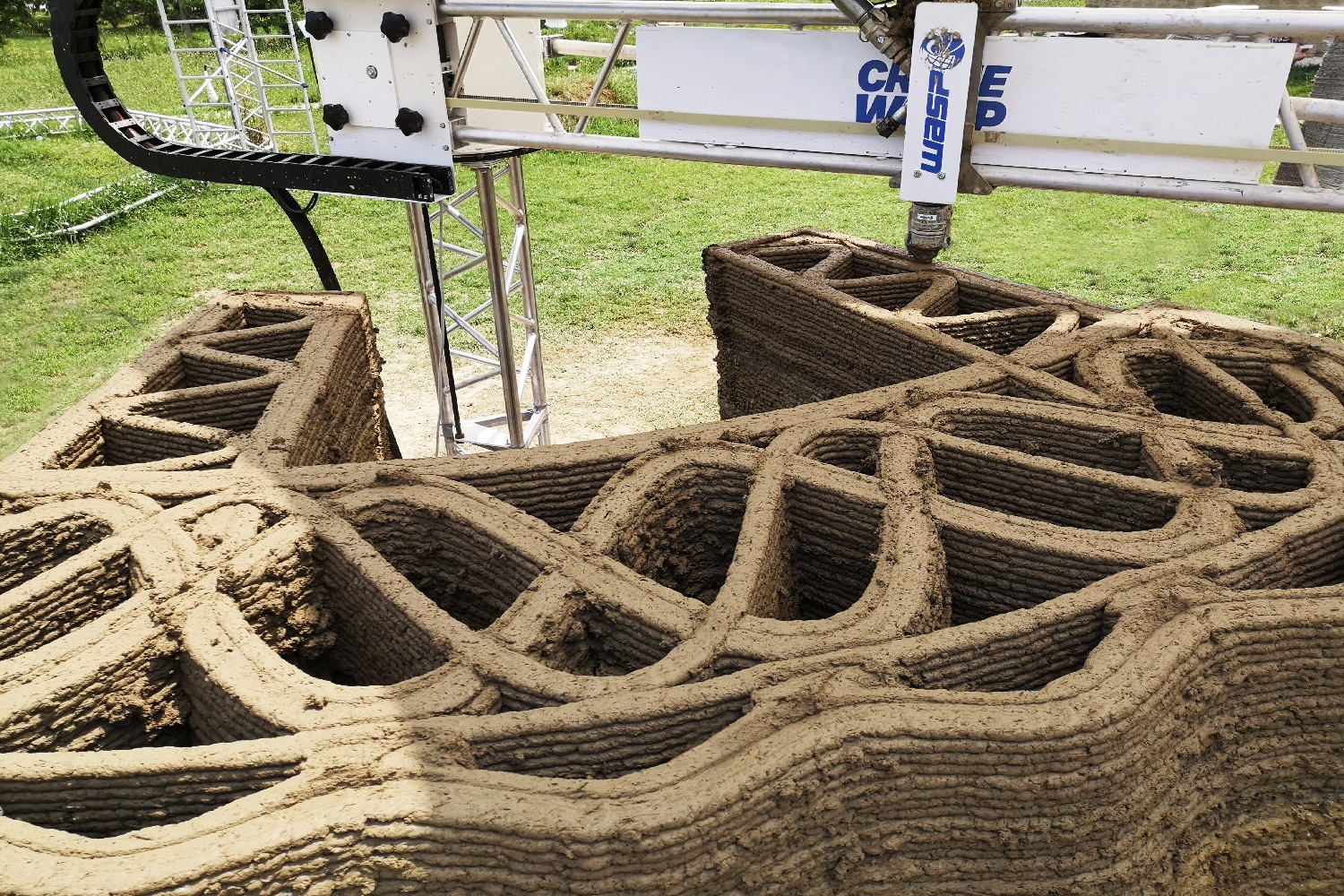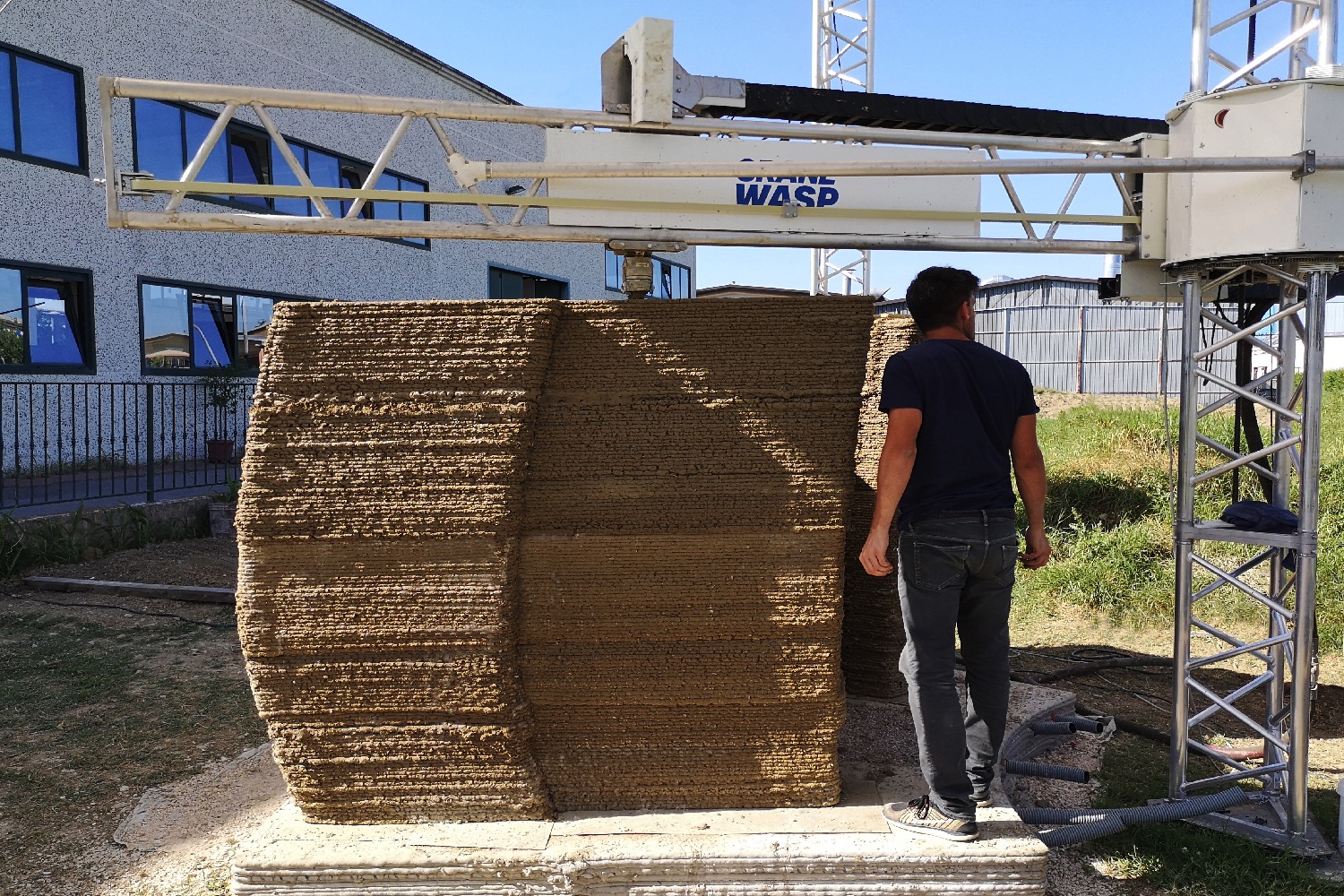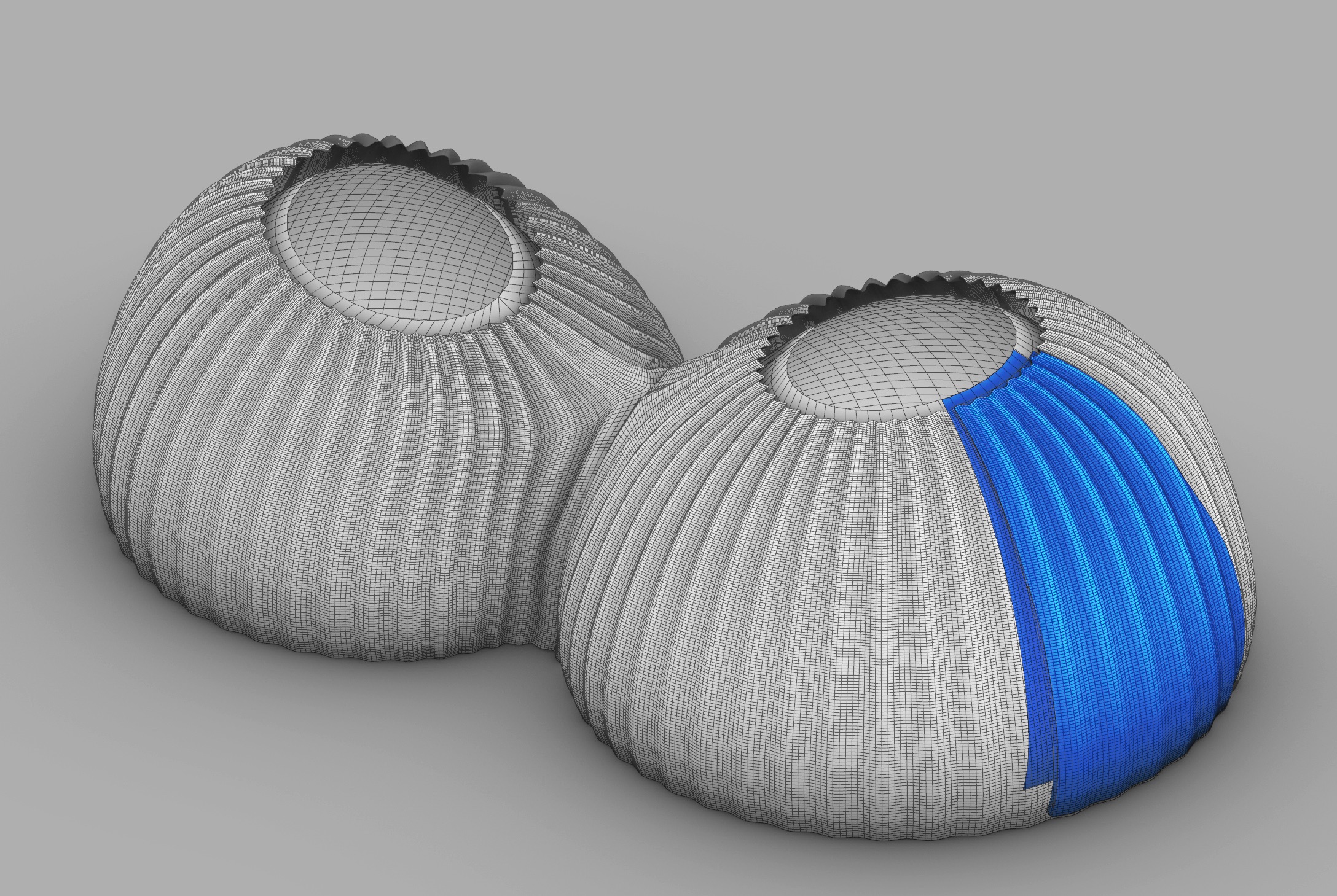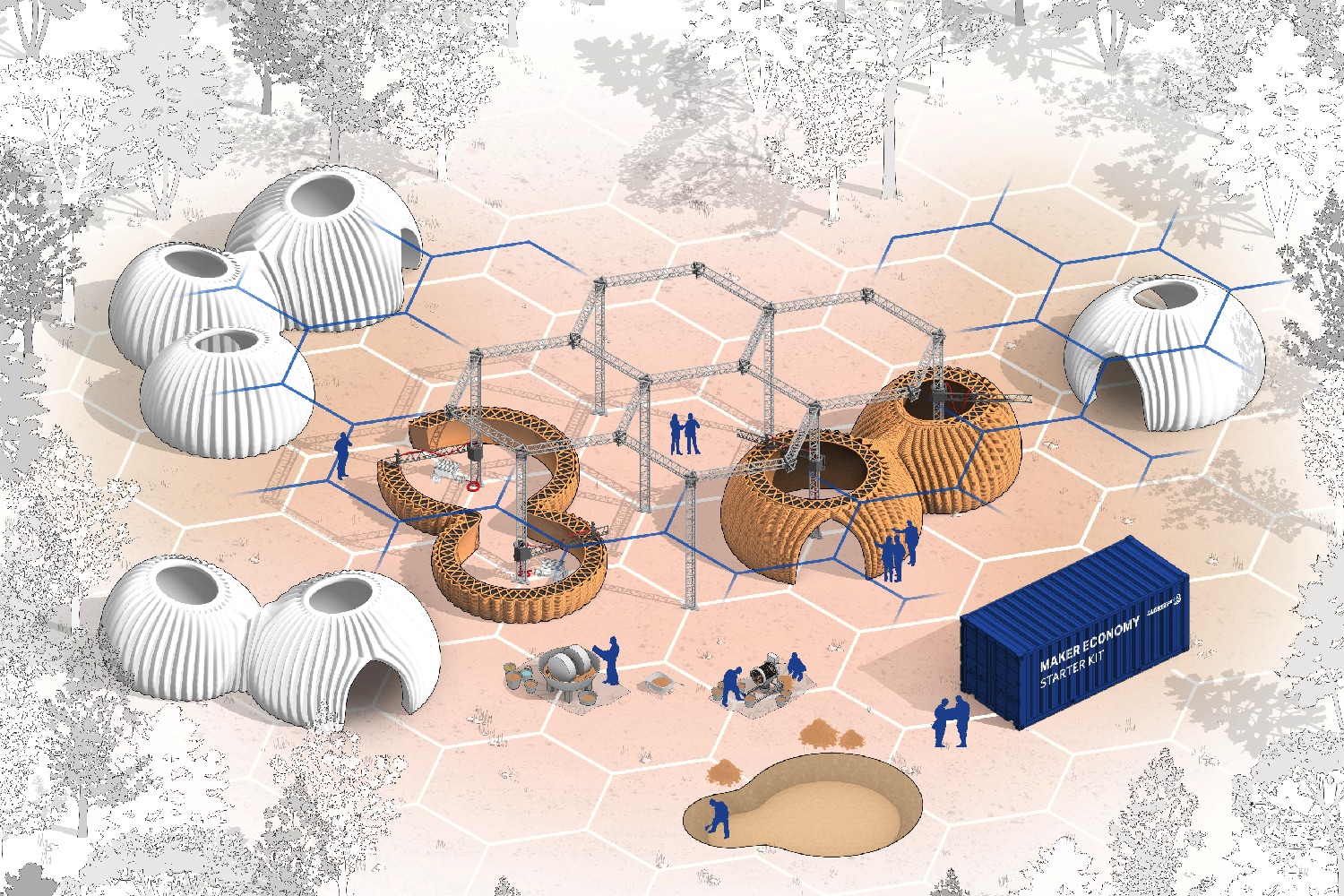No, it’s not the setup for a dystopian science fiction movie; in the future we really might live in giant 3D-printed wasp nests. At least, that’s the vision for one possible version of the future dreamed up by Mario Cucinella Architects (MC A) and the aptly named Italian 3D printing company WASP (World’s Advanced Saving Project). Inspired by the design of a potter wasp’s nest, they have developed a prototype eco-friendly housing unit that could provide a home for humans at a time of exponential population increase and lack of affordable housing.
“The design, lead together with MC A, aims to embed within [its] earthen wall system every architectural system, including structure, thermo-insulation, ventilation and water collection at once,” Massimo Moretti, CEO of WASP, told Digital Trends.
“TECLA, as a double-dome shape [makes possible] for the first time the simultaneous use of multiple collaborative printers. [We believe that] the dome is the most efficient way to reach enclosed buildings without any kind of crowning or support during the construction. The 3D technology allows [us] to minimize the amount of material, optimizing the wall performances towards the building needs. Furthermore, the design has been developed to be easily adaptable to print in different climate conditions, in order to enlarge the construction scope.”
The so-called TECLA house is created using entirely reusable, recyclable materials taken from the local terrain. It can be printed on-site using the Crane WASP 3D printer, with materials made from biodegradable and recyclable locally sourced clay. TECLA received planning approval for its first houses in May 2019, commenced printing in September 2019, and the first prototypes will be completed in the Italian municipality of Massa Lombarda by early 2020. After this, the project aims to start building similar communities of smart houses around the world.
“WASP is going to enter, as soon as possible, the construction market with Crane WASP, in order to offer an effective green solution to the building industry,” Moretti continued. “The 3D technology must represent an affordable way to build where lack of housing is getting [to be] an issue. I am referring to the thousands of homeless people that deserve much more than a [homeless shelter to live in].”
While this isn’t the first 3D printed house we’ve covered at Digital Trends, it’s certainly an intriguing project — and a great example of biomimicry in action. Just hope none of your neighbors mistake it for an actual giant wasp nest grown out of control!
